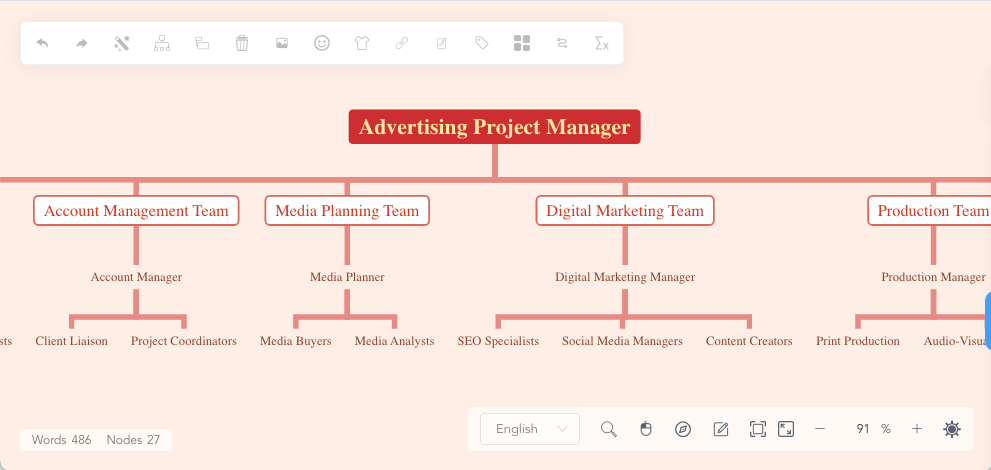
In the world of planning and organization, having a clear structure and well-defined roles is essential for success. In this blog post, we will delve into the concept of organizational charts and how they can serve as a valuable tool for organizing your thoughts and planning effectively. Discover the power of organizational charts in providing clarity, fostering collaboration, and optimizing your planning process.
- Visual Representation of Structure:
Organizational charts offer a visual representation of the structure and hierarchy within an organization. They help you visualize the relationships between different roles, departments, and teams. By mapping out these connections, organizational charts provide a clear understanding of the reporting lines and the overall structure of the organization. This visual representation aids in organizing your thoughts and ensures that planning efforts align with the established structure. - Clarity in Roles and Responsibilities:
One of the key benefits of organizational charts is their ability to provide clarity in roles and responsibilities. Each position in the chart is clearly defined, making it easier to understand who is responsible for what. This clarity promotes effective delegation, accountability, and coordination, ensuring that tasks and decisions are assigned to the right individuals or teams. When planning, this clarity helps you allocate resources effectively and streamline the workflow. - Streamlined Decision-Making:
Organizational charts streamline decision-making by clearly identifying the key decision-makers within the organization. With an organizational chart, you can quickly identify who has the authority to make decisions at each level. This knowledge allows you to involve the appropriate stakeholders in the planning process, ensuring that decisions are made efficiently and by the right people. Streamlined decision-making leads to faster execution and smoother planning processes. - Facilitating Collaboration and Communication:
Organizational charts foster collaboration and communication within an organization. By visualizing the relationships between different roles and teams, organizational charts promote effective communication channels and enhance teamwork. Team members can easily identify theirpeers, superiors, and subordinates, facilitating communication and collaboration. This collaboration and open communication contribute to better planning outcomes, as ideas can be shared, feedback can be obtained, and everyone can work together towards a common goal.
Introducing Visual Paradigm Smart Board: Your Free Organizational Chart Tool!

Visual Paradigm Smart Board is your go-to solution for creating and utilizing organizational charts effortlessly. With our free Organizational Chart Tool, you can easily design, customize, and collaborate on organizational charts to enhance your planning and organizational processes.
Visual Paradigm Smart Board offers a user-friendly interface that allows you to create visually appealing and interactive organizational charts. Customize your charts with different colors, shapes, and icons to make them engaging and easy to understand. Collaborate with team members in real-time, allowing everyone to contribute their ideas and insights to the planning process.
Don’t miss the opportunity to leverage the power of Visual Paradigm Smart Board as a free tool for creating and optimizing organizational charts. Sign up today and experience the benefits of enhanced organization, streamlined planning, and improved collaboration. Unleash the full potential of your planning process with Visual Paradigm Smart Board now!

